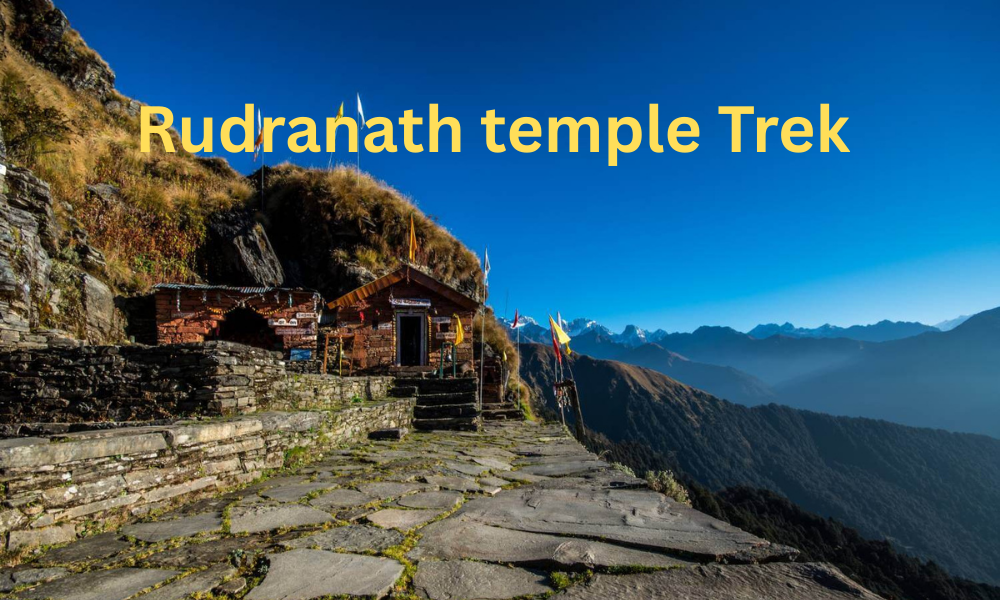Table of Contents
Introduction to Rudranath temple
The Rudranath Trek is a beautiful and spiritually significant trek located in the Garhwal region of Uttarakhand, India. It is part of the famous Panch Kedar pilgrimage and attracts trekkers and devotees alike. Known for its stunning natural beauty and serene atmosphere, the Rudranath Trek offers an unforgettable experience combining adventure, culture, and spirituality.
History and Background
The Rudranath Trek is a beautiful and spiritually significant trek located in the Garhwal region of Uttarakhand, India. It is part of the famous Panch Kedar pilgrimage and attracts trekkers and devotees alike. Known for its stunning natural beauty and serene atmosphere, the Rudranath Trek offers an unforgettable experience combining adventure, culture, and spirituality.
Rudarnath Trek Route and Distance
The trek generally starts from Gopeshwar or sometimes from Joshimath. The route takes trekkers through charming villages like Mandal and scenic spots such as Kunjethi. The total trek distance is approximately 18-20 kilometers one way, typically taking 2 to 3 days to complete depending on the pace and stops along the way.
Trekking Experience of Rudarnath
The trail is blessed with stirring views of the Himalayas, thick pine and rhododendron timbers, and fresh mountain air. Pedestrians frequently spot unique foliage and fauna, including Himalayan catcalls and wildflowers. The journey is relatively grueling , taking a reasonable position of fitness, but rewards pedestrians with peaceful geographies and a close connection to nature.
Important Landmarks on the Trek
- Rudranath Temple The main magnet, known for its tranquil setting and spiritual vibes.
- Mandal Village: A quaint village that serves as a popular resting point.
- Waterfalls and Streams: Along the route, many small waterfalls and streams add to the scenic beauty and provide refreshing stops.
- Viewpoints: Various spots along the trek offer panoramic views of the surrounding Himalayan peaks.
Best Time to Visit Rudranath
The ideal time for the Rudranath Trek is from May to October, excluding the monsoon months of July and August due to heavy rainfall and slippery paths. The spring (April-June) and autumn (September-October) seasons offer pleasant weather and clear skies, perfect for trekking and sightseeing.
Tips for Treks
- Carry warm clothing as nights can be cold even in summer.
- Wear sturdy trekking shoes with good grip.
- Pack essentials like water, snacks, first aid, and rain gear.
- Maintain physical fitness before the trek to handle the moderate difficulty.
- Respect the local culture and the sanctity of the temple.
- Stay hydrated and take breaks as needed to avoid exhaustion.
Hidden spots to Rudranath
- Panar Bugyal Sunset Point
- Pitradhar
- Surya Kund & Chandra Kund
- Naola Springs
- Devdhar Viewpoint
Cultural Significance
- Local legends of Rudranath Temple.
- Connection with Panch Kedar and other temples.
- Interaction with Garhwali villages and traditions.
Rudranath Temple Overview
- Region: Chamoli district, Uttarakhand, India.
- Altitude: ~3,600 meters (11,800 feet) above sea level.
- Trek Distance: ~20 km from the nearest village (Sagar, Mandal, or Gopeshwar)
Religious Significance of rudranath temple
- Rudranath is one of the five Panch Kedar tabernacles, which are
- Kedarnath( hump of Shiva)
- Tungnath( arms)
- Rudranath( face)
- Madhyamaheshwar( nexus)
- Kalpeshwar( hai
- At Rudranath, the face( mukha) of Lord Shiva is worshipped. It’s believed to have naturally manifested in a gemstone inside the tabernacle.
- The name “ Rudranath ” comes from “ Rudra ”, one of Shiva’s fierce forms, and “ nath ”
Conclusion on Rudranath Temple
Rudranath Temple, nestled in the Garhwal Himalayas of Uttarakhand, stands as a profound symbol of devotion and spiritual significance. As one of the Panch Kedar temples dedicated to Lord Shiva, it offers not just a place of worship but a deeply immersive experience for pilgrims and trekkers alike. The challenging journey to reach Rudranath reflects the deep spiritual commitment of devotees, while the serene natural surroundings enhance its mystique and sanctity. Combining mythology, breathtaking landscapes, and spiritual tranquility, Rudranath remains a timeless testament to India’s rich cultural and religious heritage.
FAQ About Rudranath temple
What is Rudranath Temple?
Rudranath Temple is a Hindu sanctum devoted to Lord Shiva, located in the Garhwal region of Uttarakhand, India. It’s one of the sacred Panch Kedar tabernacles and is believed to be the place where Lord Shiva’s face( mukha) appeared.
Where is Rudranath Temple located?
The tabernacle is positioned at an altitude of about 3,600 measures( 11,800 bases) in the Chamoli quarter of Uttarakhand, girdled by thick timbers and alpine meadows.
How can I reach Rudranath Temple?
Rudranath can only be reached by trekking, with routes starting from Sagar Village, Lyuti Bugyal, or Mandal village. The trek ranges from 20 km to 24 km, depending on the starting point.
What is the best time to visit Rudranath Temple?
The best time is May to October, when the weather is favorable and the temple remains open. The temple is closed during the winter due to heavy snowfall.
Is the Rudranath trek difficult?
The stylish time is May to October, when the rainfall is favorable and the tabernacle remains open. The tabernacle is closed during the downtime due to heavy snowfall.



